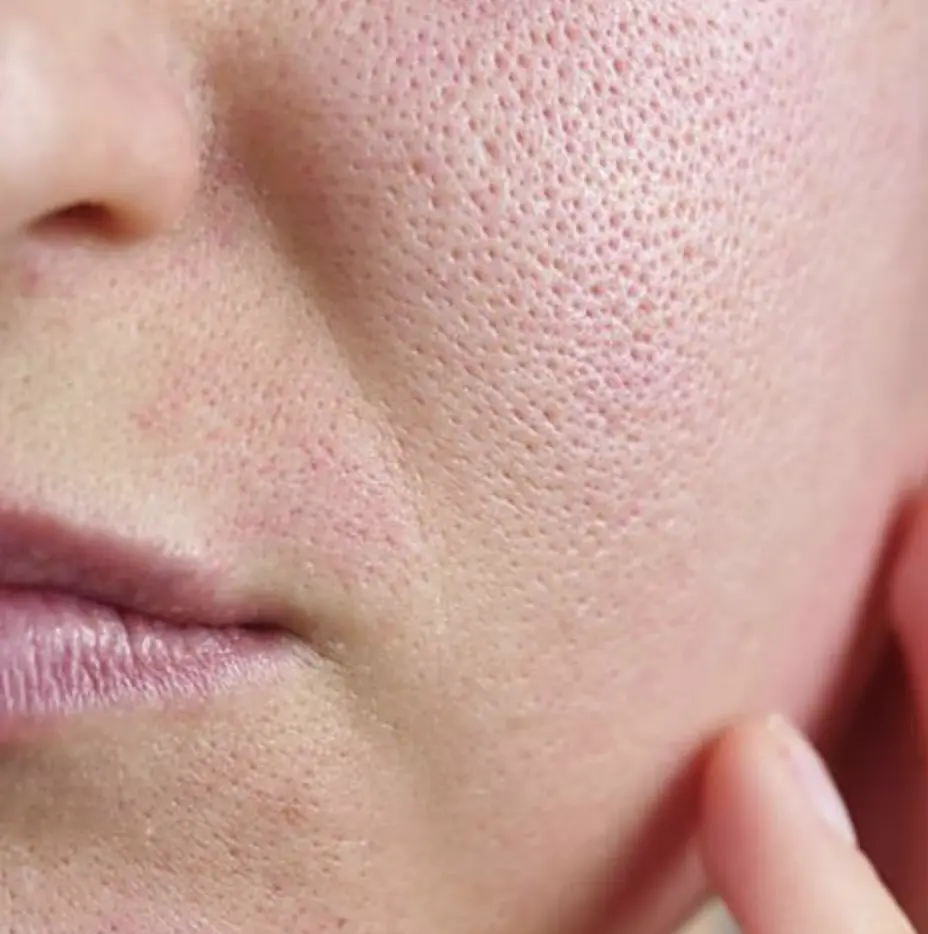A Guide To Pores
A Complete Guide to Clearer Skin

Pores are one of the most common skin concerns people face, yet they're also one of the most misunderstood aspects of skincare. Whether you're dealing with enlarged pores, clogged pores, or simply want to understand what's happening on your skin, this comprehensive guide will help you navigate the world of pore care with confidence. With modern AI-powered skin analysis, we can now better understand individual pore patterns and create targeted approaches to minimize their appearance.
What Are Pores, Really?
Pores are tiny openings in your skin that serve as exit points for hair follicles and sebaceous (oil) glands. Think of them as your skin's natural ventilation system. Every single hair on your body emerges from a pore, and each pore is connected to a sebaceous gland that produces sebum – your skin's natural oil that helps keep it moisturized and protected.
There are actually two types of pores on your face: oil pores (sebaceous pores) which are connected to sebaceous glands and are most prominent on your T-zone, and sweat pores which are much smaller and connected to sweat glands. When people talk about "pore problems," they're almost always referring to oil pores.
Key Fact: You cannot permanently shrink your pores. Despite what many products claim, pore size is largely determined by genetics and cannot be fundamentally changed. However, you can definitely minimize their appearance and prevent them from becoming more prominent.
Why Do Some People Have More Visible Pores?
The visibility and size of your pores depend on several factors, many of which are beyond your control:
Genetics
Play the biggest role in determining your pore size. If your parents had large pores, you're more likely to have them too. Your genetic makeup determines how much oil your sebaceous glands produce.
Age
Affects pore appearance as your skin loses collagen and elasticity over time, making pores appear larger as the skin around them becomes less firm.
Skin Type
People with oily skin typically have larger, more visible pores because their sebaceous glands are more active. Increased oil production can also lead to clogged pores.
Sun Damage
Can worsen pore appearance over time. UV exposure breaks down collagen and elastin, causing pores to become more prominent and lose their elasticity.
Common Pore Problems and Their Causes
Clogged Pores
When dead skin cells, oil, and debris accumulate in pores, they become clogged. Blackheads form when the clog is exposed to air and oxidizes. Whiteheads occur when the pore is completely blocked.
Enlarged Pores
Pores can appear larger due to excess oil production, loss of skin elasticity, or chronic clogging that stretches the pore opening over time.
Effective Strategies for Pore Management
1. Gentle but Consistent Cleansing
The foundation of pore care is proper cleansing. Use a gentle cleanser twice daily to remove oil, dirt, and makeup without stripping your skin. Look for cleansers with salicylic acid if you're prone to clogged pores, as this beta-hydroxy acid can penetrate into pores and help dissolve buildup.
Important: Avoid harsh scrubbing or over-cleansing, which can irritate your skin and actually stimulate more oil production.
2. Incorporate Chemical Exfoliants
Chemical exfoliants are more effective than physical scrubs for pore care because they can penetrate into pores and dissolve debris.
Salicylic Acid (BHA)
Oil-soluble, making it perfect for penetrating into pores and dissolving the mix of oil and dead skin cells. Start with 0.5-1% concentration, 2-3 times per week.
Glycolic Acid (AHA)
Helps with surface exfoliation and can improve overall skin texture, making pores appear smaller. Particularly helpful for sun damage or rough texture.
3. Use Retinoids for Long-term Results
Retinoids are among the most effective ingredients for improving pore appearance over time. They work by increasing cell turnover, stimulating collagen production, regulating oil production, and improving overall skin texture.
Start Slowly: Begin with retinoids 1-2 times per week and gradually increase frequency as your skin adjusts, as they can cause initial irritation.
4. Don't Skip Moisturizer
Even if you have oily skin, moisturizing is crucial for pore health. When your skin is dehydrated, it can actually produce more oil to compensate, potentially leading to more clogged pores. Choose a lightweight, non-comedogenic moisturizer.
5. Sun Protection is Essential
Daily sunscreen use is one of the most important steps in preventing pore problems from worsening. Sun damage breaks down the collagen that keeps skin firm around pores, so protecting your skin can prevent future enlargement.
What NOT to Do to Your Pores
Avoid these common mistakes that can make pore problems worse:
1. Don't squeeze or pick at your pores – this can cause scarring and make pores appear larger
2. Avoid pore strips regularly – frequent use can irritate skin and potentially enlarge pores
3. Don't use harsh scrubs – aggressive physical exfoliation can damage skin and worsen pore appearance
4. Skip alcohol-based toners – these can over-dry your skin and trigger more oil production
The Bottom Line
Managing pores is about working with your skin, not against it. While you can't change your genetics or completely eliminate pores (nor would you want to – they serve important functions!), you can definitely improve their appearance and prevent them from becoming a bigger concern.
✨ Analyze your pores with FaceSkinAI
Get personalized AI skin analysis and tailored product recommendation.
Sign Up



